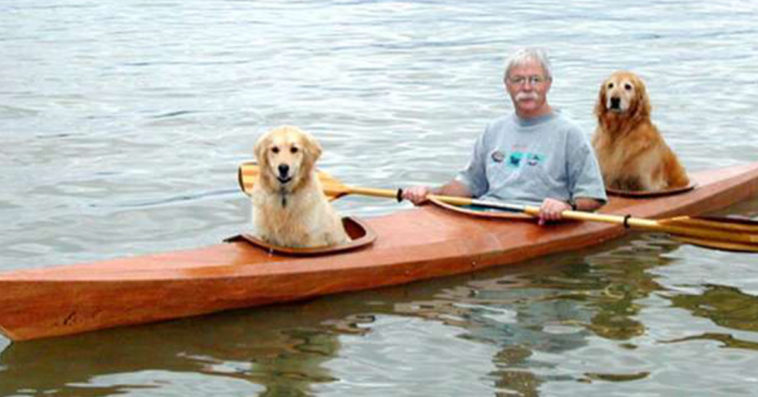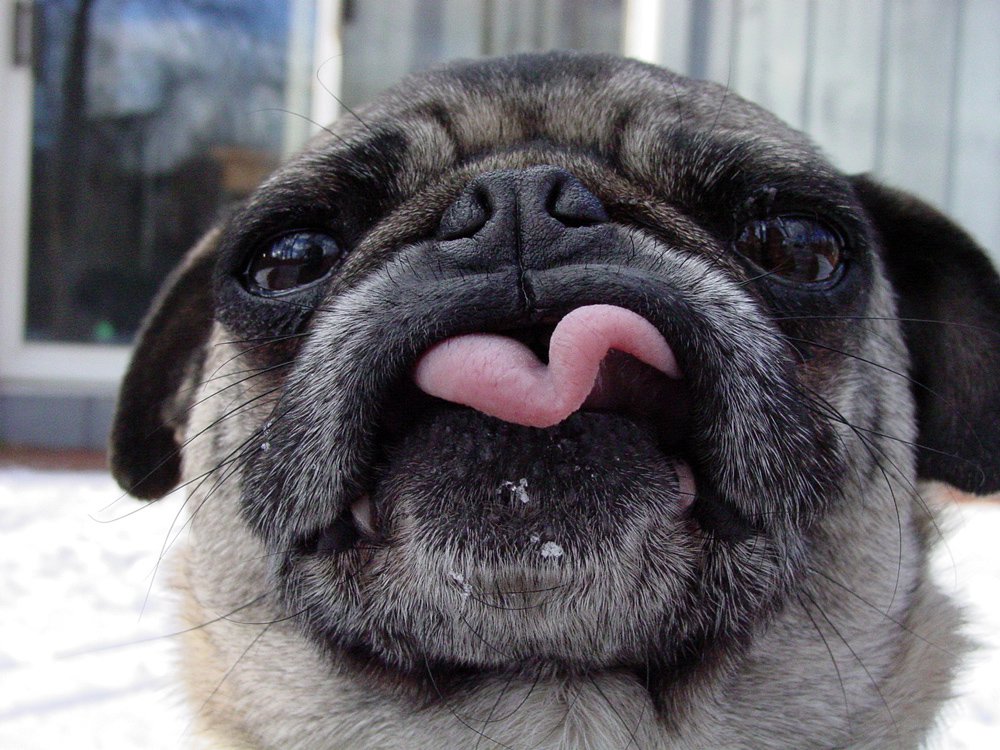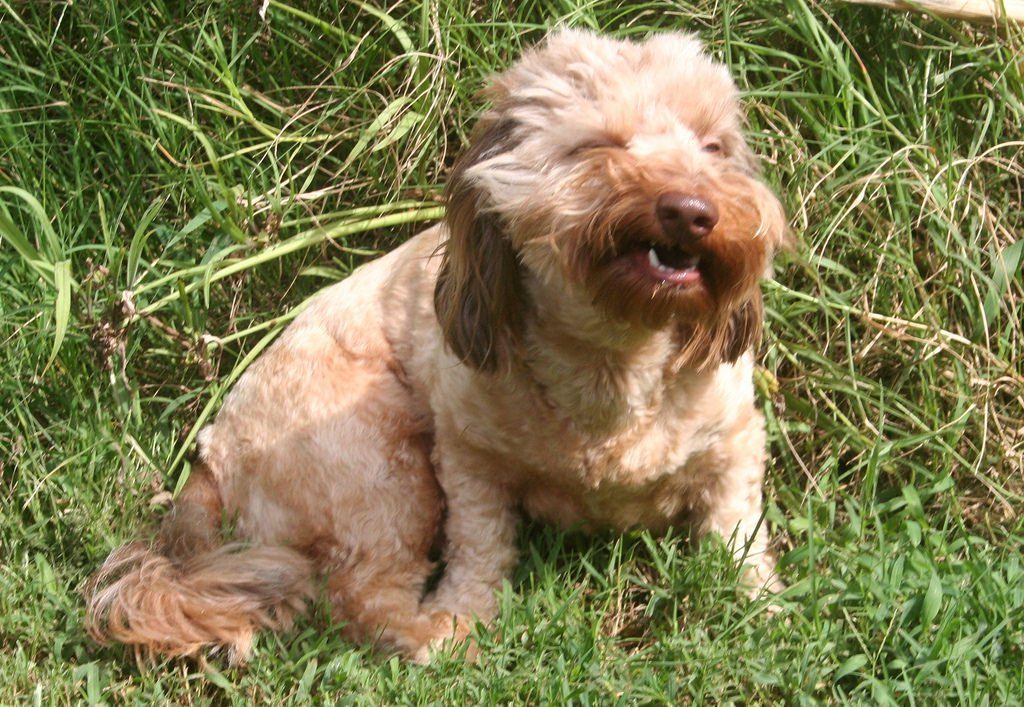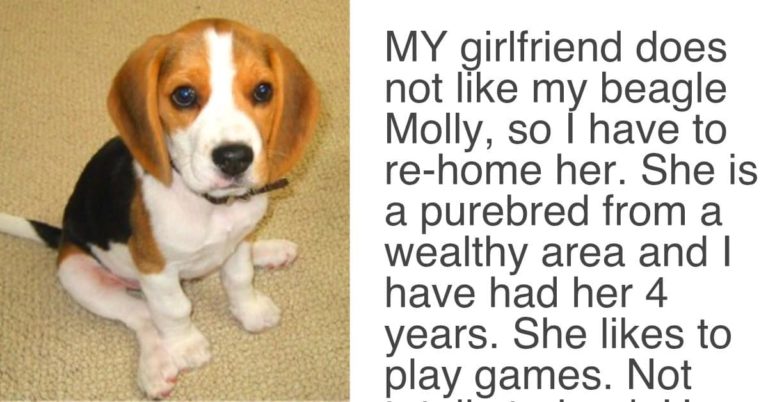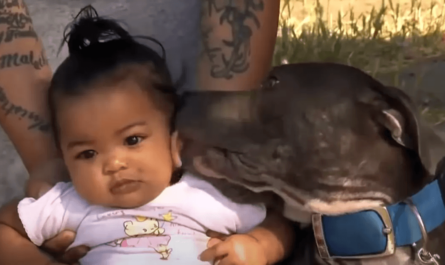As a retired orthopedic surgeon, David Bahnson had a lot of time on his hands to relax and do what he loved most: kayaking.
The only downside was that taking his beloved pups along with him proved to be difficult…so he decided to make a custom solution for Susie and Ginger, his beautiful Golden Retrievers.
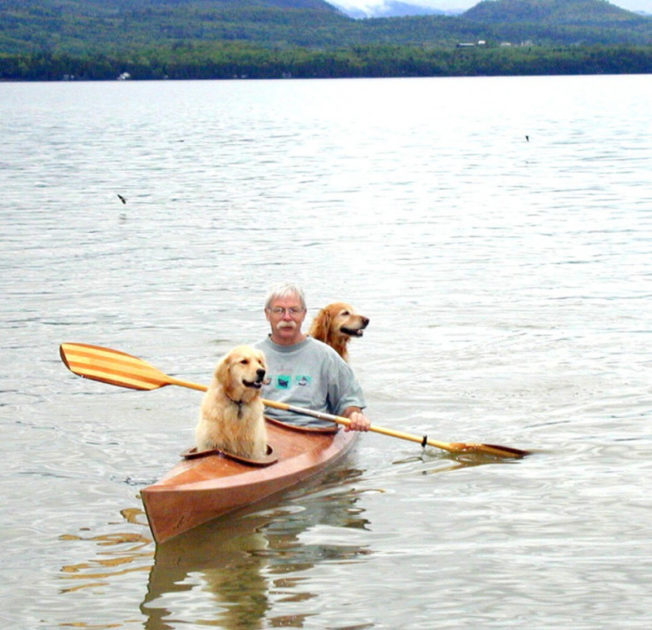
 Source: Photos provided by Linda Bahnson
Source: Photos provided by Linda Bahnson
He ordered a boat kit from Pygmy Boats, but made a few very important modifications. Instead of letting the pups sit with him in the “cockpit,” he decided to make two different seats for them.

 Source: Photos provided by Linda Bahnson
Source: Photos provided by Linda Bahnson
That way, the dogs could safely jump out of the kayak if they need to — and they wouldn’t be in their dad’s way if he needed to paddle.
The good girls took to boating like ducks to water! They were trained to get in the kayak, sit down, and prepare themselves for an aquatic adventure. Then, whenever their dad would paddle them to shore, they would patiently wait until he told them it was okay to disembark.

 Source: Photos provided by Linda Bahnson
Source: Photos provided by Linda Bahnson
Thankfully, even if there was an accident on the water, the dogs were enthusiastic and strong swimmers, so David was never worried (although he did bring life vests along for the dogs).
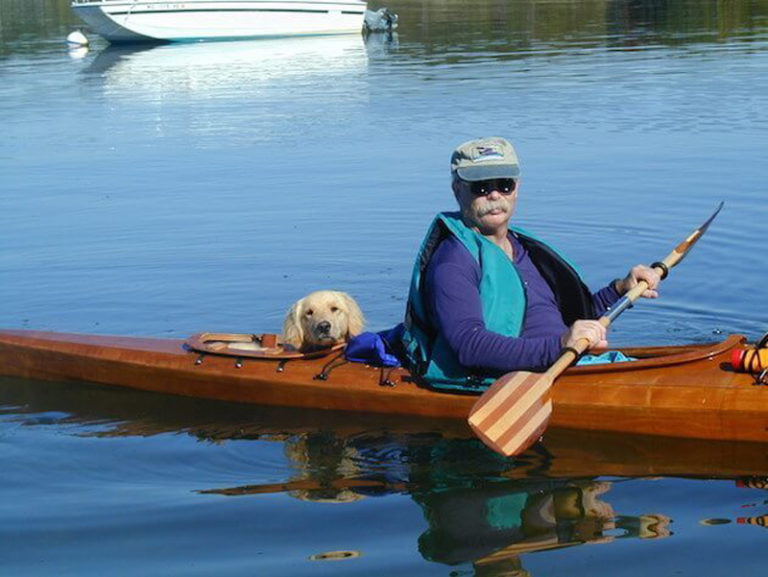
 Source: Photos provided by Linda Bahnson
Source: Photos provided by Linda Bahnson
Unfortunately, since David build this custom doggo-kayak, both Susie and Ginger have passed away. But, he had such a blast on the water with his two girls, the retired surgeon is already training a new pup to go out on adventures with him!
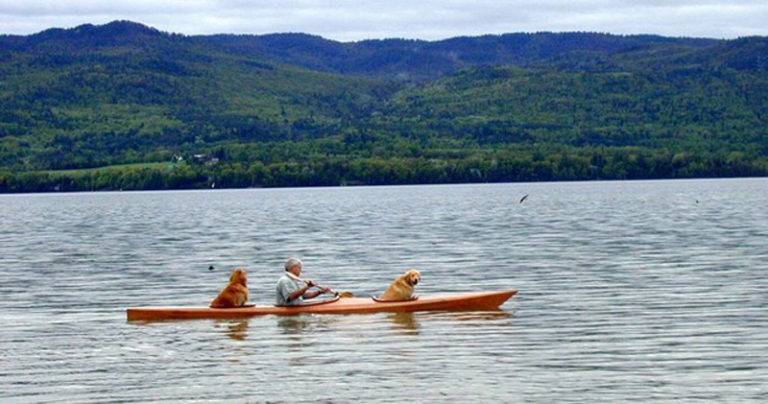
 Source: Photos provided by Linda Bahnson
Source: Photos provided by Linda Bahnson
As long as you can do it safely, taking your dog along with you on an outdoor adventure is a treat! They know how to make almost every situation better.
Plus, who could say no to a paddling break filled with snuggles and wet kisses? Just remember to put on life jackets on you and your fur children 🙂
Please ‘SHARE’ to pass on this story to a friend or family member
10 Of The “Most Loyal” Dog Breeds On The Planet
Giving love and support to humans is something that some dogs do better than others.
While many dogs love everyone they meet and are willing to take treats or belly rubs from anyone, the pups we found are just the opposite.
These 10 dogs are some of the most loyal breeds on the planet. They are rock steady in their loyalty to their owner no matter what.
1) Akita
When the American Kennel Club (AKC) lists loyalty to describe the temperament of the Akita, you know they mean business. The beautiful double-coated working dog of Japanese ancestry is considered hardwired in protecting those she loves. They should be socialized with other dogs and people from the time they are puppies. Their silly, fun, but dignified personalities round out the loyal Akita.
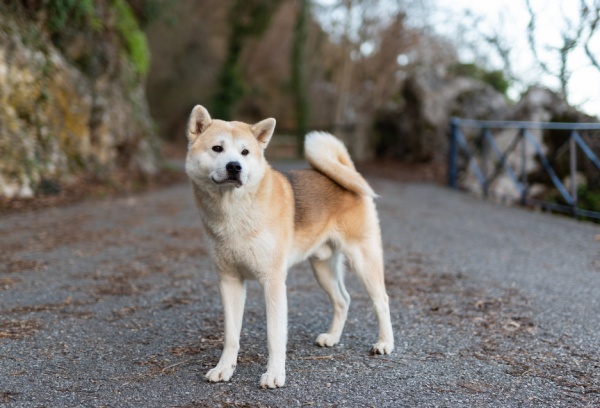
 Source: NicoMonaco/Flickr
Source: NicoMonaco/Flickr
2) Boxer
This working dog is smart, full of energy, and oh so loyal to their family. They get along great with kids and have an innate instinct to protect their pack. He’s a watchdog with a heart of gold who oozes dedication to his owner.

 Source: Pierre Pocs Photography/Flickr
Source: Pierre Pocs Photography/Flickr
3) Skye Terrier
Known as the “small dog with the big ears,” this adorable breed hails from the Scottish Isle of Skye, hence the name. Whether you live in the city or the country, this small dog with a big personality is steadfast in snuggling, playtime, and remaining loyal to his owners.
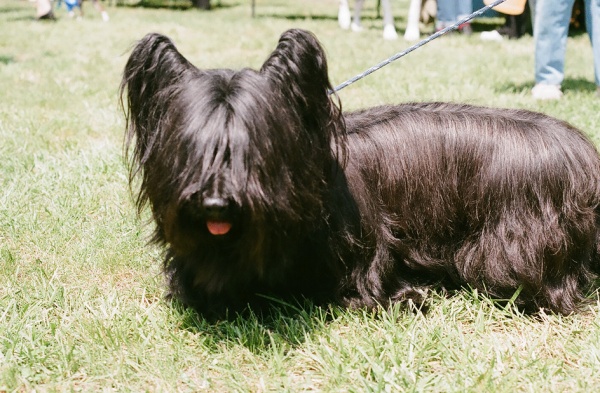
 Source: WaketheSun/Flickr
Source: WaketheSun/Flickr
4) Beagle
This merry hound is friendly, curious and incredibly loyal. While he doesn’t mind the occasional couch potato time, this spunky pooch is energetic and merry. A fun fact about this hound: the breed standard is for 13 inches and under and another in the 13-15 inch category. No matter how you size him, these adorable dogs just want to cling to you.
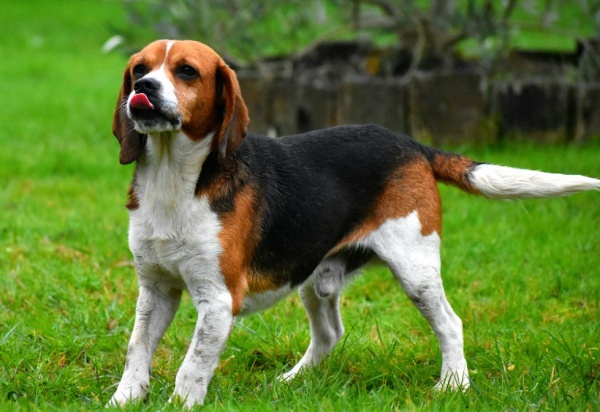
 Source: Simon Hameau/Flickr
Source: Simon Hameau/Flickr
5) Shar-Pei
This wrinkly non-sporting breed is standoffish to strangers but very loyal to his owner. His ancient Chinese roots are part of the charm of the Shar-Pei. Regal, strong, and smart, if you want a BFF for life, this loose-skinned pooch may be the right choice for you.

 Source: Alessandro Persano/Flickr
Source: Alessandro Persano/Flickr
6) Pug
Originally bred as lapdogs for Chinese emperors, the wrinkly-faced Pug has a laid back and loyal nature. Historically, many famous folks have owned a Pug: Napoleon’s wife, Josephine; Italian designer, Valentino; and Jessica Alba, and Paris Hilton. As if they aren’t adorable enough, a group of Pugs is called a “grumble!”
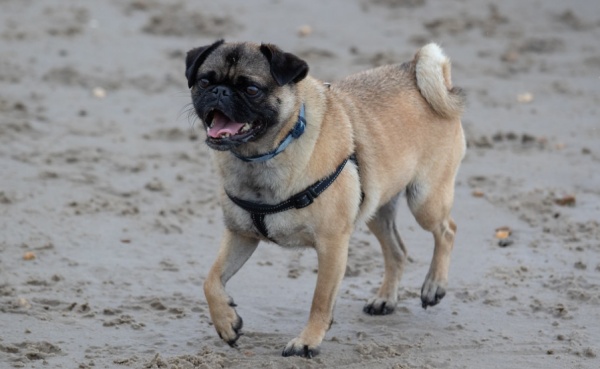
 Source: Paul Dore/Flickr
Source: Paul Dore/Flickr
7) Chihuahua
Sassy and loyal, this pint-sized pooch with the big personality is one of the oldest breeds in the Americas. Their big dog attitude attracts many people but they do require a loving, consistent owner. In return, they are loyal to their tiny core. Preferring to sit in your lap and remain tried and true, don’t forget to walk them, too!

 Source: Brucie_ate_Sammy/Flickr
Source: Brucie_ate_Sammy/Flickr
8) Doberman Pinscher
His magnificent stature coupled with his fearless and loyal personality places this working dog on our list. He is smart, noble, and often used as protection. Historically, German taxman and dog breeder, Louis Dobermann, took his dog along on his tax collection rounds. You can imagine how eager folks were to pay up right away.

 Source: Clickfree2009/Flickr
Source: Clickfree2009/Flickr
9) Great Pyrenees
Majestic, strong, smart, and loyal sum up the personality of this magnificent working dog. His coat is thick and his devotion to you is immense. The AKC dubs them “vigilant guardians of home and family.” They are calm yet ready to spring into action if their pack is faced with a threat. Sadly, the breed is more susceptible to bloat than other breeds, so a savvy, loyal owner is required.
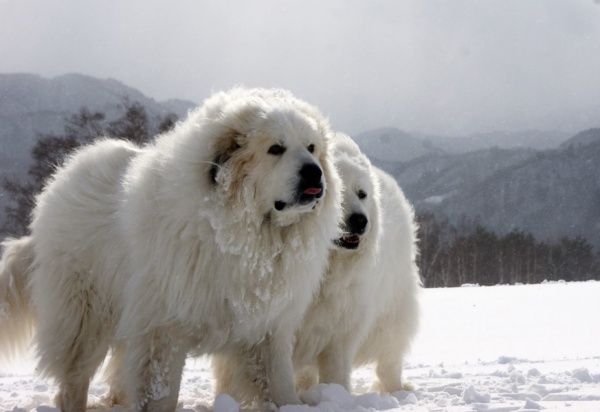
 Source: aconk sukawinata/Flickr
Source: aconk sukawinata/Flickr
10) St. Bernard
Perhaps best known for rescuing stranded travelers in the Swiss Alps, this diehard working breed is also wonderful with kids. He is sweet, sometimes shy, but can be stubborn despite his devotion to you. This known drooler requires an owner who is dedicated to socializing him so that his strong personality is properly channeled. He’ll pay you back with love and loyalty over and over.

 Source: DaiRut/Flickr
Source: DaiRut/Flickr
Story: Man’s About To Return Shelter Dog When He Reads Previous Owner’s Note


A man had finally settled into his new town, but something still felt missing from his life. He thought getting a companion in the form of a shelter dog might help. So he did just that. He went to the shelter where a black Lab named Reggie needed a home. But they didn’t hit it off right away.
The man gave it two weeks (the amount of time the shelter said it may take for the dog to adjust to his new home), but it just wasn’t working out. Maybe it was the fact he was also trying to adjust to a new situation. Maybe they were too much alike. But then the man started going through Reggie’s stuff, and that’s when he was reminded of a letter the previous owner had left with the dog. That’s what would end up changing their lives dramatically.








What an amazingly beautiful story. It’s all going to work out for Tank and his new owner. 🙂
You’ve read this far… you need to watch this short BEAUTIFUL video clip.. It will touch your HEART! Enjoy!
https://www.youtube.com/watch?v=8tiqOrytYpI
[h/t Tickld]


Does this sound familiar? Your dog suddenly starts making loud snorting sounds—over and over again, in quick succession.
Do you start wondering, did they swallow something they shouldn’t have? Can they breathe?!
Chances are, you’re experiencing the infamous “reverse sneeze.”
Veterinarians often see dogs whose owners rushed them in for an emergency appointment after finding them standing with their elbows apart, head pulled back, and eyes bulging as they snort or gasp repeatedly.
Yet for the vast majority of these dogs, a vet visit was unnecessary.
Reverse sneezing looks and sounds scary the first time you encounter it. However, it’s a fairly common and harmless respiratory event for dogs.
Read on to learn how to identify reverse sneezing, what causes it, and how to tell the difference between a harmless reverse sneeze and something else.
What is reverse sneezing?
A reverse sneeze is pretty much what it sounds like: a sneeze that happens in reverse! The above video is a good example of what it looks and sounds like.
In a regular sneeze, air is rapidly pushed out through the nose. In a reverse sneeze, air is rapidly, and noisily, pulled in through the nose.
It occurs in spasms lasting anywhere from a few seconds up to a minute and sounds like snorting, snuffling, and even gagging. See the above video for an example.
Because of the sounds their dogs make while reverse sneezing, many people mistakenly think their dog is choking. However, a reverse sneeze is almost as normal and harmless as a regular sneeze.
What causes reverse sneezing?
There’s no single cause for a reverse sneeze. Like regular sneezing, it’s often triggered by an irritation or inflammation in the nose, throat, or sinuses.
It often occurs when dogs wake up from a nap, or after eating, when their breathing pattern may have rapidly changed. It’s also caused by irritants in the airway—anything from dust to an inhaled hair!
Some dogs experience more frequent reverse sneezing in springtime when the air is full of pollen and other allergens.
Others reverse sneeze more in the winter, when sudden temperature changes between outdoors and indoors cause the nasal passages to contract.
Another common cause of reverse sneezing is pressure on the throat and neck. A too-tight collar, or straining against the leash, can irritate the throat and lead to a reverse sneeze. That’s just one more reason to consider a harness for your dog.
Finally, some dogs reverse sneeze after exercise, or when they’re overexcited. This is particularly common among brachycephalic, or short-nosed, breeds like pugs and bulldogs.
When they get worked up, they may inhale their elongated soft palates into the throat, triggering an episode of reverse sneezing.
How to end a reverse sneezing episode
Reverse sneezing is super-common, and it won’t hurt your dog. However, some dogs become anxious during a reverse sneezing episode, and a lengthy episode may be uncomfortable.
You can help your dog recover from a reverse sneezing episode by remaining calm yourself. If you get anxious, your dog’s anxiety will increase, too. So, stay calm, and show your dog there’s nothing to panic about.
If your dog is experiencing a particularly long episode of reverse sneezing, you may be able to ease or end the episode by:
- Gently massaging your dog’s throat
- Briefly covering their nostrils, which will cause them to swallow and potentially stop sneezing
- Depressing their tongue with your hand to help open airways
- Some vets suggest gently blowing in your dog’s face
In the vast majority of cases, there’s no need to intervene. Reverse sneezing doesn’t last long, and your dog will be perfectly normal after it stops.
When you should go to the vet
https://www.instagram.com/p/BfoSLvBAsDL/?utm_source=ig_embed
As mentioned, reverse sneezing rarely requires veterinary treatment. As soon as the sneezing episode stops, the situation is resolved. However, if episodes increase in frequency or duration, you should call the vet just in case.
You should also seek treatment if your dog’s reverse sneezing is accompanied by other respiratory symptoms or if they have any unusual discharge from their nose.
Occasionally, chronic reverse sneezing can be a symptom of more serious issues. These include nasal mites, foreign objects in the airway, respiratory infections, and tracheal collapse.
If you’re concerned about the intensity of your dog’s reverse sneezing, take a video to show the vet. They’ll be able to determine potential causes.
Most dogs experience episodes of reverse sneezing at some point in their lives. For the vast majority of dogs, it’s a common, temporary, harmless reaction with no lasting aftereffects.
Of course, it still sounds unsettling to our human ears! But now that you know what reverse sneezing is, you’ll be less likely to make an unnecessary vet visit.
https://www.youtube.com/watch?v=OMwbkggmZwU
Girlfriend Gives Partner An Ultimatum, Demands Either The Dog Goes Or She Goes
Science Discovers That Dogs Can Sense ‘Bad People’
